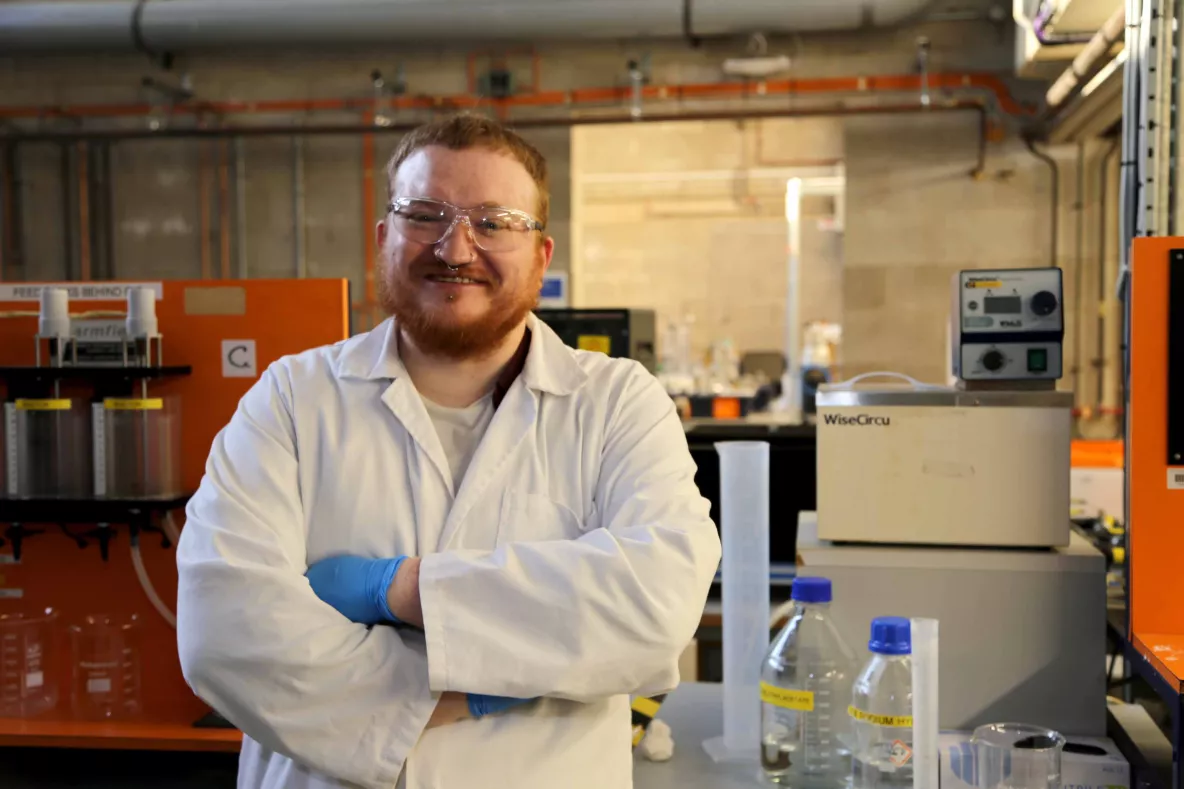

UL Student: Alan Enright
Course: BSc. in Pharmaceutical and Industrial Chemistry
Supervisor: Dr. Sarah Hudson and Mateo Flores PhD candidate of the Hudson Group.
Project Title: ‘Synthesis and Characterisation of multi-action Clofazimine nanoparticles using ionic e-Polylysine and Nisin Z as antimicrobial peptide adjuvants and related novel delivery methods to reduce antibiotic antagonism.’
My research proposal and project originally arose in 2nd year when applying for the S & E faculty summer bursary under Dr. Sarah Hudson that did not go ahead due to COVID-19 restrictions. Ultimately, I then decided to pursue the project as a self-chosen FYP topic with Dr. Hudson that was then continued into a summer bursary following my final year studies.
I chose to pursue the topic of antimicrobial resistance and drug preformulation due to personal interest and the ever-increasing proliferation of antibiotic resistant pathogens. Although antimicrobial resistance occurs naturally, it has been accelerated anthropogenically through over prescription, misuse in humans and animals alongside a lack of new drug entities being discovered and brought to market. The hypothesis of this project was to take an existing small molecule antibiotic, increase surface area and modify it with cationic polymers so that it would act on multiple mechanistic targets within the microbial species to enhance treatment efficacies.
Dr. Sarah Hudson of the Hudson group was chosen as my supervisor due to her role as Co-Principal Investigator and co-theme lead of SSPC’s Materials theme, with research being undertaken by Dr. Hudson and her group in the areas of drug delivery and biopharma..
I began my project by generating nanoparticles of the small molecule antibiotic Clofazimine through the antisolvent precipitation method in stirred vials. After nanoparticles were achieved, the process was repeated then adding the cationic polymer epsilon polylysine to adhere electrostatically to the nanoparticles. Initially I experienced stability issues with this formulation and on the advice based on research done by Mateo Flores a PhD candidate of the Hudson group, Nisin Z was incorporated as an additional polymeric bacteriocin to provide structural stability and hopefully an additional antimicrobial effect.
To characterise my generated nanoparticles, I used methods such as FTIR, sizing via zetasizer, zeta potential measurements to gauge stability, stability testing on the zetasizer, dissolution testing via uv-vis spectrophotometry and minimum inhibitory concentration testing via antimicrobial plate and colony counts.
As my studies during Pharmaceutical and Industrial Chemistry focused mainly on organic, analytical, physical, inorganic and chemical engineering, the incorporation of microbiological studies added an extra challenge in an area I was extremely unfamiliar with. Testing that an antimicrobial formulation displays a bacteriostatic or bactericidal effect is of critical importance, it must be done through microbiological methods. This highlighted the relevance of undertaking the bursary as a form of research experience, as research in working groups is often multidisciplinary and/or collaborative in nature.
Although I was unable to gain clear results in terms of antimicrobial efficacy, due to repeated plate contamination and overall discrepancies it did seem like the formulation containing Clofazimine nanoparticles with nisin Z and epsilon polylysine as excipients showed somewhat of an effect. The ultimate findings of my research were that Nisin Z and epsilon polysine demonstrated a stabilising effect on the colloidal nanostructures generated.
I intend to pursue a career in research in drug delivery and materials or possibly a PhD once I finish my current studies. Since adding the Summer Bursary to my CV I have noticed increased attention from potential employers, highlighting how great an opportunity the research bursary is as a form of early introduction and experience to a career or further studies in research. I would like to thank the Faculty of Science and Engineering and Dr. Hudson for this opportunity.
Postal Address: Science & Engineering Faculty Office, Lonsdale Building, 1st Floor, University of Limerick, Limerick, Ireland
Email: scieng@ul.ie
Phone: +353 (0)61 202109 or +353 (0)61 202642